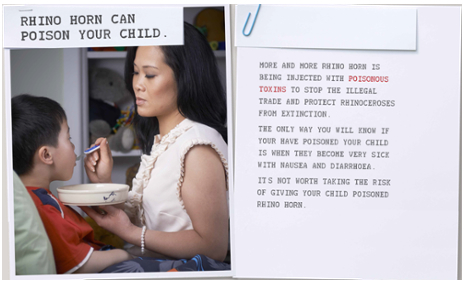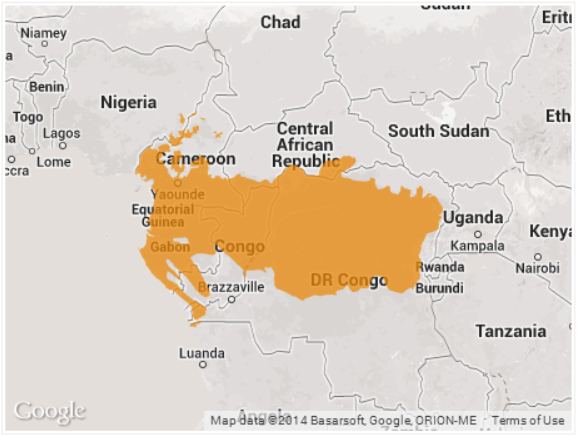In my previous post, Shoot-to-Kill Policy: Injustice in the Name of Conservation, I argued that militaristic shoot-to-kill (S2K) policies are likely ineffective in curbing poaching in the long term. Worse yet, through the guise of wildlife conservation, regimes use S2K’s military ethos to justify arbitrary and excessive violence on human… read more
Demand Reduction
Governmental Will: Key to Protecting African Elephants from Chinese Consumption
My last post addressed ways in which the Chinese government has attempted to protect its domestic elephant population. Most of the efforts have been aimed at enhancing park conditions and patrols, as well as providing support to farmers affected by elephant attacks (including relocation and economic aid). Promoting elephant protection… read more
Will the USA support public awareness campaigns around the world?
Throughout the fall semester, I researched the effectiveness of public awareness campaigns in reducing demand for illegal wildlife products. I have examined campaigns from China, England and the USA. The purpose of this research was to develop an action plan for the USA; a way for the government to get… read more
Reports uncover thousands of illegal wildlife products for sale online
According to a recent study by TRAFFIC (a joint project of the World Wildlife Fund and International Union for Conservation of Nature), the illegal ivory trade has increased 300% from 1998 to 2011. Much of that growth has doubtless been facilitated by the internet, owing to its convenience and historically weak… read more
China Protecting (Chinese) Elephants
Chinese ivory demand is as large as it is famous. China has been accused of driving the dramatic increases in elephant poaching in Africa, with more than 30,000 elephants killed per year for their ivory. A less known fact is that China itself is home to over 250 wild elephants,… read more
Two Truths and a Lie: Campaigns to Reduce Rhino Horn Demand in Vietnam
Great news coming out of Vietnam: rhino horn demand is down more than 33% in just one year. A poll conducted by Neilsen for the Humane Society International (HSI) and the Vietnam Convention on International Trade in Endangered Species of Wild Fauna and Flora (Cites) found that only 2.6% of… read more
Mercado de Sonora: Black Magic, Black Trade
Can’t find the love of your life? Having problems with a mean boss? Trying to get a powerful lucky charm? Want to get rid of your bad luck? The Mercado de Sonora, in the heart of Mexico City, offers a wide variety of occult items to fulfill any macabre… read more
Addressing Wildlife Demand Reduction in China
The Chinese government, with the support of international wildlife NGOs, must implement a systematic approach to curbing the demand for wildlife products. A seemingly arbitrary cherry-picking of species with mixed motives—like that of curbing corruption—have garbled the message of wildlife conservation in China. For the past three decades, environmental concerns… read more
Are Public Awareness Campaigns Effective?
On September 15, the U.S. Fish and Wildlife Service (USFWS) launched the month-long “Ivory Challenge.” USFWS crushed six tons of confiscated ivory in November of last year. Through the Ivory Challenge, they are calling for artists “to create a compelling, thought provoking, informative and impactful display to increase awareness about… read more
Does the U.S. have a role in curbing wildlife loss in the Congo Basin?
The Congo Basin The Congo Basin is shared by 6 African countries and, according to the World Wildlife Fund, is home to 400 species of mammals, 1,000 species of birds and 700 species of fish, including at-risk species like gorilla, elephants, bonobos and chimpanzees. It is also home to 75… read more








